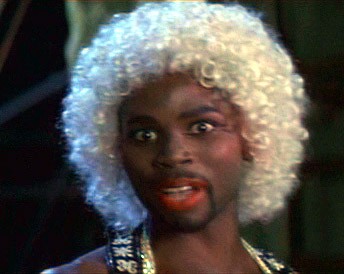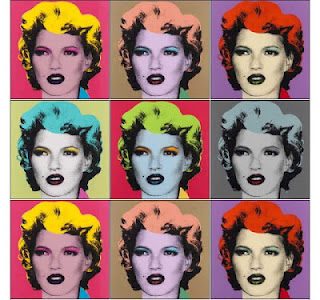Cards In This Set
| Front | Back |
|
Signifier |
A signs PHYSCICAL form (for example a sound, printed word or image) as opposed to its meaning. FERDINAND DE SAUSSURE (Course in General Linguistics). For example, the word "open" seen on a shop window's signifier would be the written word, "open".
|
 Sign |
The sign is comprised of two parts - the signifier and the signified. A sign MUST consist of these two. These two may differ in meaning depending on the context in which they exist, for example a sign can exist of one signifier ("open"), and have a different signified depending on where the signifier is encountered, eg. ("open" could refer to opening a door, but also opening a bottle top). A sign can be interpreted as having a meaning and has the abiity to communicate this meaning. It can work through any of the senses; eg. visual, auditory and even taste.
FERDINAND DE SAUSSURE (Course in General Lingustics). |
 Alterity |
The state of being other or different. Links to post-colonial literature in which figures such as Bertha Mason in CHARLOTTE BRONTE'S Jane Eyre and Antoinette Cosway in JEAN RHYS' Wide Sargasso Sea are portrayed as the 'other' due to their race. These characters who find themselves in-between the English imperialist and black native's are represented as "the boundary between human and animal" - GAYATRI SPIVAK (Three Women's Texts and a Critique of Imperialism). Additionally, the term "alterity" can be applied to postmoderist literature, in which authors such as ROBERT COOVER and JOHN BARTH use postmodernist techniques such as fragmentation, intertextuality and permutation as a way to differentiate their writing styles from that of the modernist movement.
|
 Epistemology |
The theory of knowledge itself, especially in regards to its method, logic and subject matter, and the difference between justified beliefs and opinions. It questions what knowledge is and how it can be acquired in addition to studying the origins behind a concept. In Epistemology of the Closet, EVE KOVOSKY SEDGWICK examines the argument that sexuality and gender do not match up in any identifiable manner. The "specification of individuals" faciliated the modern sexual definition with epistemology and power relations, and as a result less stable and identity-bound understandings of sexual choice persisted and developed. In MICHELE FOUCAULT'S words "the homosexual was now a species" and there became divided opinions between homo and heterosexuality as well as gender and sexuality.
|
 Nature |
The phenomena of the physical world - including the landscape, plants, animals and features of the world as opposed to human beings and aritificial productions. In his essay Nature, RALPH WALDO EMERSON described nature as "essences unchanged by man; space, the air, the river, the leaf". He views nature as bountiful and resourceful in that it is an endless cycle of elements helping one another. For example the wind scatters the seeds, the rain feeds the plant, the plant feeds the animal". Whilst in WILLIAM CRONON'S Wilderness; or Getting Back to the Wrong Nature he states that despite the conception that humans are not linked with the production of nature they are a key factor and have a profound affect upon it, claiming that 'nature' is a "product of civilization".
|
 Synchronic |
Relating to the study of lingustic features, such as dialect, lexis and pronunciation or events of a particular time, without allusion to its historical context. FERDINAND DE SAUSSURE used this term, in addition to 'diachronic' as a way to describe the approaches to language. The 'synchronic' looks at language at a particular moment in time, without reference to it's history.
|
 Ideology |
A system of ideals, ideas and beliefs which form the foundation of economic and political theory. JUDITH BUTLER'S Performative Acts and Gender Constitution looks at the relationship between performance and gender identity and the ideological norms that are associated with sex and gender labels. The very act of saying something about sex results in imposing cultural and ideological norms. Butler believes that gender is imitative and copies a model and generalised ideal, however this is through the repetition of gender acts as opposed to an objective ideal. The ‘ideal’ construct is something that has “materialized through time”. Additionally, it has become part of the social norm to associate genders and sexuality with labels, for example a lesbian would be classed as “butch”, whilst a homosexual would be classed “feminine”, as well as female’s portrayed as “girly girls” and men as “masculine”.
|
 Performativity |
Interdisciplinary term used to identify speech and gestures which act and consummate an action. In Performative Acts and Gender Constitution, JUDITH BUTLER states that gender is instituted through the “stylization” of the body – for example through gestures and movement. The “stylized repetition of acts” are a constituent of performativity that create the ideology behind the gender labels. The term ‘performativity’ emerges from the similarities between gender acts and theatrical contexts. There are ways of ‘doing’ one’s gender and in accord with certain “sanctions and prescriptions”. Having a body is like having a job; you have to ‘do’ it properly and within the law. Performativity is a term highly placed on the homosexual and transsexual community – and there are thin lines to be drawn between performance and life.
|
 Signified |
The message/concept of the conveyed sign. For example the word “open” seen on a shop door. The signified would be that the shop is “open” for business (FERDINAND DE SAUSSURE – Course in General Linguistics).
|
|
Panopticon |
MICHEL FOUCAULT'S reference to JEREMY BENTHAM'S ‘Panopticon’ theory in his book Discipline and Punish: The Birth of the Prison. A supposition of the late 18th century that regarded observation as a key constituent to discipline and punishment in modern society. The Panopticon became an institutional building which subjected inmates to permanent visibility. However, their lack of knowledge as to when and how they were being observed was a way to reign power over their mind through architecture, and to enable them to act in such a way that they thought were under permanent scrutinizing surveillance.
Quote: FOUCAULT: “The gaze is alert everywhere”. |
 Manifest Content |
The information which a sleeper remembers after awaking from their dreams. This consists of all the components of images, thoughts and content within the dream that the individual is cognitively aware on in full consciousness – CAN be referred to as the ‘tip’ of the iceberg. Although the dream-work may appear fragmented and bizarre one can interpret and analyse this manifest content to reveal its hidden meaning. Manifest content leads to the latent content through association. SIGMUND FREUD – The Interpretation of Dreams.
|
 Latent Content |
1. Similar to the manifest content but distinctly separate. Existing but not yet developed. The latent content of a dream highlights the individual’s repressed thoughts, desires and drives through their unconscious thoughts. The unconscious mind actively supresses what can be revealed from the manifest content in order to protect the feelings of the dreamer which are particularly difficult to cope with. This is called displacement. An unconscious defence mechanism which the mind substitutes a new aim/goal felt in their original form as dangerous and unacceptable. SIGMUND FREUD – The Interpretation of Dreams.
|
 Logocentricism |
A method of analysis, especially of literary works, that focuses upon speech (words and language), not written work, and the meanings of these as opposed to structure. Excessive attention paid to an author’s individuality or historical context. Logocentrism follows in the development of FERDINAND DE SAUSSURE'S (General Course in Linguistics) linguistic sign. “The linguistic sign is not defined by the combination of the written word and the spoken word: the spoken form alone constitutes the object”. He also claims that language has an “oral tradition that is independent of writing”. “Language constitutes our world…Meaning is always attributed to the object or idea by the human mind”. In JACQUES DERRIDA'S Of Grammatology he states that “logocentrism” is the attitude that logos (the Greek term for speech, thought and reason) is the central principle to language. Speech is the original signifier of meaning.
|
 Binary Oppositions |
A pair of related terms that can exist together but are opposite in terms, for example “aching pleasure” (John Keats, Ode on Melancholy). A structuralist idea that acknowledges the human tendency to think in terms of opposition. According to FERDINAND DE SAUSSURE binary oppositions is the means by which the units of language have value or meaning by being in reciprocal with another term. With this categorization a set of terms usually have a negative and positive word, eg. Hot/cold. Jacques Derrida argued that these oppositions were arbitrary and unstable. Derrida is often referred to as the ‘Father of Deconstruction’, and deconstruction often goes against structuralism (for post-structuralism), and as a result binary oppositions. Embodiments of binary oppositions in ROBERT LOUIS STEPHENSON Strange Case of Dr Jekyll and Mr Hyde (Good/Evil) and JEAN RHYS' Wide Sargasso Sea (Slave abolition/Racial divide).
|
 Pastiche |
An artistic work (visual art, literature, music) in a style that imitates another work, artist or period. Pastiche is a constituent of intertextuality, a common feature of post-modernist literature. JEAN RHYS' Wide Sargasso Sea draws upon CHARLOTTE BRONTE'S Jane Eyre as a way to shape its story. Similarly, in DAVID LODGE'S essay Postmodernist Fiction he states that “The history of modern literature…can be seen as an oscillation in the practice of writing between polarized clusters of attitudes and techniques…”, thus, modern literature has a tendency to parody and imitate previous works in a new way.
|



